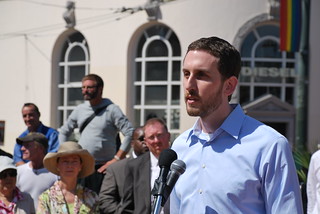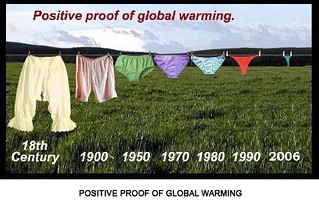
It’s Earth Day. Here in California, state regulators are celebrating with their Keep California Beautiful Event that kicks off at the State Capitol followed by cleanup activities, like picking up litter and collecting e-waste, across the State. The Department of Toxic Substances Control (DTSC) that protects communities from toxic harm is in on the act with Caltrans, California Highway Patrol, CalRecycle, and several other agencies.
The Director of the DTSC, Debbie Raphael, recently characterized her agency as one that “creates ballfields, parks, schools, and vibrant communities.” She says, “We hold people accountable for polluting the world and California. We protect drinking water…we give people a voice. We are problem solvers. We protect. We heal.”
Really? Tell that to the poisoned community of Wildomar built on toxic soil, or to the community of Los Nietos in the heart of Los Angeles that may be drinking water laced with carcinogenic hexavalent chromium, or to the people of Simi Valley who suffer the runoff of carcinogenic waste from the land Boeing owns at the Santa Susana Field Lab that suffered the worst nuclear meltdown in US history years ago.
All of these are platitudes and make-believe that don’t reflect reality. Government exists to solve collective problems that industry, with its profit motive and cutting corners, just can’t manage. Government has to provide the right incentives and the right regulation. What the government has to offer individuals on Earth Day-US EPA tips include don’t litter, save water, compost, and ride a bike to work-doesn’t get us all the way there.
Here in California, we got a sobering picture last week. The US EPA said that the state of California has failed to spend $455 million of federal money to improve water structure in the state including on water treatment facilities. Thousands of Californians are exposed to water contaminated with nitrates and other toxins every day. The California Department of Public Health had no good answer for this. And where is the State Water Resources Control Board, that paragon of water quality protection? Apparently AWOL.
And you can trust the DTSC to circle the wagons instead of look soberly at how it falls down in protecting communities and the environment from toxic harm, as outlined in our report Golden Wasteland.
The DTSC routinely lets toxic polluters who manage hazardous waste slide. We have some of the toughest environmental laws in the nation, but some of the weakest enforcement. The DTSC is the poster child for that. The department levies wrist slap fines that are just the cost of doing business, lets companies operate on expired permits for decades at a time, and doesn’t have the moxie to revoke or deny the permits of serial toxic violators as the law intends. The result is communities that report illnesses from cancer to lupus because of toxic soil and groundwater. The devastation in these communities isn’t as visible as the devastation in West, Texas. But the harm is real. It just takes longer for it to manifest.
And don’t think that a West, Texas can’t happen here, either. The Chevron refinery fire in Richmond last summer is a case in point. It could have been far worse than sending 15,000 people to the hospital. People could have been killed as they were in West, where a deadly explosion at a fertilizer plant razed five blocks around the facility. But our system of fragmented regulation and passing off of responsibility from one regulatory agency to the next almost ensures we’ll have more disasters to come.
Here in Richmond, at a public meeting on Friday night that the regional head of the U.S. Chemical Safety Board couldn’t attend-because he was investigating the Texas explosion-the chairman of the federal body said that the secretive refinery industry should provide regulators with information on refinery technology and regulators should work together to monitor wear on materials.
Chevron chose not to replace corroded pipes that led to the explosion and toxic cloud over Richmond. The explosion could have been prevented, but the regulatory system is reactive and not capable of foreseeing and forestalling problems, according to the Board. And there aren’t enough skilled refinery inspectors in the state.
The DTSC’s own priorities are so inside out that the department has gutted its refinery inspection capability to two inspectors for the whole state-while two top officials invest in refineries and other companies the department regulates. The California Department of Occupational Safety and Health (Cal/OSHA) also has too few inspectors for workplace safety. Cal OSHA fined Chevron a pinprick $1 million dollars for the fire, while DTSC refused to sanction the refinery at all even though it has the legal right. And what about the Bay Area Air Quality Management District? AWOL too. Wrist-slap fines are routine for refinery air infractions and air regulators haven’t made a peep about the toxic black cloud over Richmond.
Ironically, the U.S. Chemical Safety Board is “grossly mismanaged” itself, according to one former board member. It’s got a short attention span and hasn’t completed investigations into the Tesoro disaster in Washington State and the Deepwater Horizon disaster. Thirteen board investigations are incomplete, according to the Center for Public Integrity.
We need a new regulatory paradigm. One where we break apart the fractured system of regulation we’ve got now in favor of coordinated inspections of refineries, chemical plants, pharmaceutical plants, hazardous waste processors and other large companies. We need to grow a spine when it comes to serial violators of environmental laws and enforce the laws on the books to break the pattern. We need to focus our efforts on enforcement-DTSC now has only 13 criminal investigators for the whole state and none in Southern California. And we need to let these investigators coordinate efforts across agencies.
The pressure is growing. Eighteen environmental groups, concerned citizens, and victims of toxic harm just petitioned Senator Kevin De Leon to thoroughly investigate the Department of Toxic Substances Control for gross mismanagement, including the drop in the number of cases referred to public prosecutors, and failure to insist on strict cleanup requirements for contamination. The group is also asking for legislators to jam the revolving door of industry influence on government regulators. So, as the Earth spins, don’t let anyone spin you. Instead, keep the pressure on. Set the regulators spinning to work for us, like they are supposed to. It’s in our hands.
_________________________________________________________________
Posted by Liza Tucker, Consumer Advocate and author of Consumer Watchdog’s groundbreaking expose Golden Wasteland. Follow Consumer Watchdog on Facebook and Twitter.







